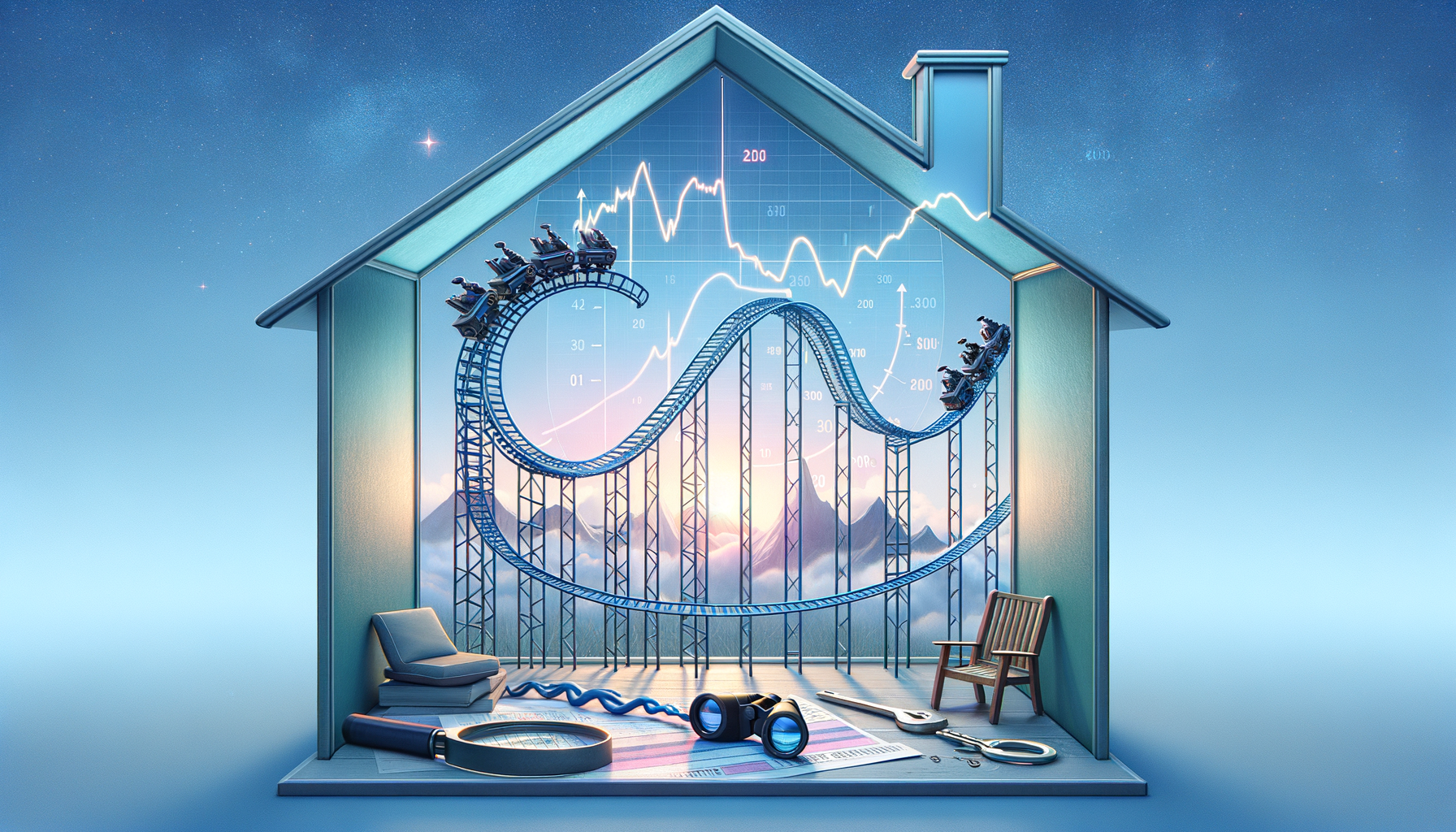“Decoding the Annual Surge in Home Prices: Have We Hit the Peak?”

The housing market, lately, has been a playground of volatility, with ups and downs steering the course of this sector. Predominantly, home prices have been gaining momentum, increasing at a swift pace. However, indicators suggest that this upward trajectory might have hit a saturation point. This implies that the annual home price gains might have arrived at the threshold of their cycle peak.
There’s no denying that homeowners have been enjoying considerable equity growth in recent times, making handsome gains as a result of this upward trend in property prices. However, it’s interesting to key into the subtleties of the housing market, trying to understand where it might be heading next. The indicators seem to lean towards softening these profits somewhat as we approach the succeeding months of the year.
Reports filtering in from across the market suggest that the annual pace of price gains may be reaching its zenith, set to display a tapering off in the months ahead. It’s valuable for homeowners and potential homeowners to understand the implications of this. While it could potentially mean a decelerating growth in equity for current homeowners, it might conversely provide a more favourable landscape for potential homeowners, granting them the opportunity to dive into the market at a slightly more accessible price point.
Understanding the dynamics of the housing market can be complex, particularly when trying to provide projection on future trends. However, making predictions is an essential part of any market analysis, and that too reflects in the housing sector. The behavioural patterns of this market are guided by an intricate web of influencing factors, from economic ebb and flow, to policy alterations, and the pulse of consumer sentiment.
To delve a bit deeper into these factors, let’s first address the rate of home price increases. The rise seen in housing prices has been quite substantial, ramping up to approximately 20% in June as per some reports. This figure underlines the runaway growth of housing prices monitored over the last year. But now, those numbers could be set for a slowdown.
Predicting market trends is a precarious task – always brimming with a level of uncertainty. Nonetheless, the prevalent market indicators imply that such an astronomic pace of growth is expected to decelerate. Various analysis indicates a rather sobering projection, suggesting that by June next year, annual growth is poised to be in a more moderate neighbourhood of 3.2%.
Following a period of dizzying growth, it isn’t unreasonable to anticipate such a dip. The tide of market trends tends to wax and wane. With the cheer of soaring home prices soon comes the expected cool-off. The industry’s key players and experts have been pointing towards this slowdown for some time now, gradually steering away from the feverish pitch seen lately.
However, before potential buyers start celebrating this seemingly good news, it’s important to underscore that although price growth is set to decelerate, the prices themselves are not anticipated to fall. Rather, prices are expected to continue rising – albeit at a less frenetic pace.
It’s equally crucial to comprehend that this deceleration does not flag a reversal of the tide, but a modulation of the waves. Some markets, mainly those that have recently been experiencing a fever pitch approach, may witness more significant slowing down. While for others, who saw steady but not explosive growth, this deceleration can be more subtle.
The potential deceleration is indeed a microscopic shift in the grand scheme of things, but still, it contributes to painting the bigger picture of the property market – a picture painted in the hues of moderation.
Another influencer in this equation is the projected rise in mortgage rates. This can put a damper on the home-buying enthusiasm. The higher the mortgage rates, the higher the likelihood of home prices retreating from their peddle-to-the-metal growth. A moderate rise in borrowing costs has already been observed, and a steeper hike could indeed turn the tide, causing a more lacklustre housing market in the coming year.
What’s also worthy of attention is the issue of housing affordability. Affordability, as a factor, has been a tug-of-war between rising wages and the rising cost of homes. If this continues, it could pile on more pressure, making it tough for potential buyers to make their way onto the property ladder. The hope is that with the expected slowing down of home price increases, a more equitable balance can be struck between income and house costs, granting a fairer playing field for potential homeowners.
To summarize it all, the housing market landscape in the next year will likely come attached with the sentiment of moderation and cooling down. But, it’s crucial for individuals–potential buyers, homeowners, and investors alike–to understand that such shifts are commonplace occurrences in the real estate gamut and to align their strategies accordingly. After all, what appears to be a deceleration in home price growth to some might spell an opportunity for others!
What remains most crucial in these complex dynamics is to stay informed, stay updated, and stay adaptable while navigating through these changing tides of the property market. After all, the housing market, much like life, is a long dance of ebbs and flows, guided by the rhythm of market trends and personal needs. Whatever the forecast may project, always remember – in the grand scheme of things, property is more than a commodity; it is, for many, a place called home.
